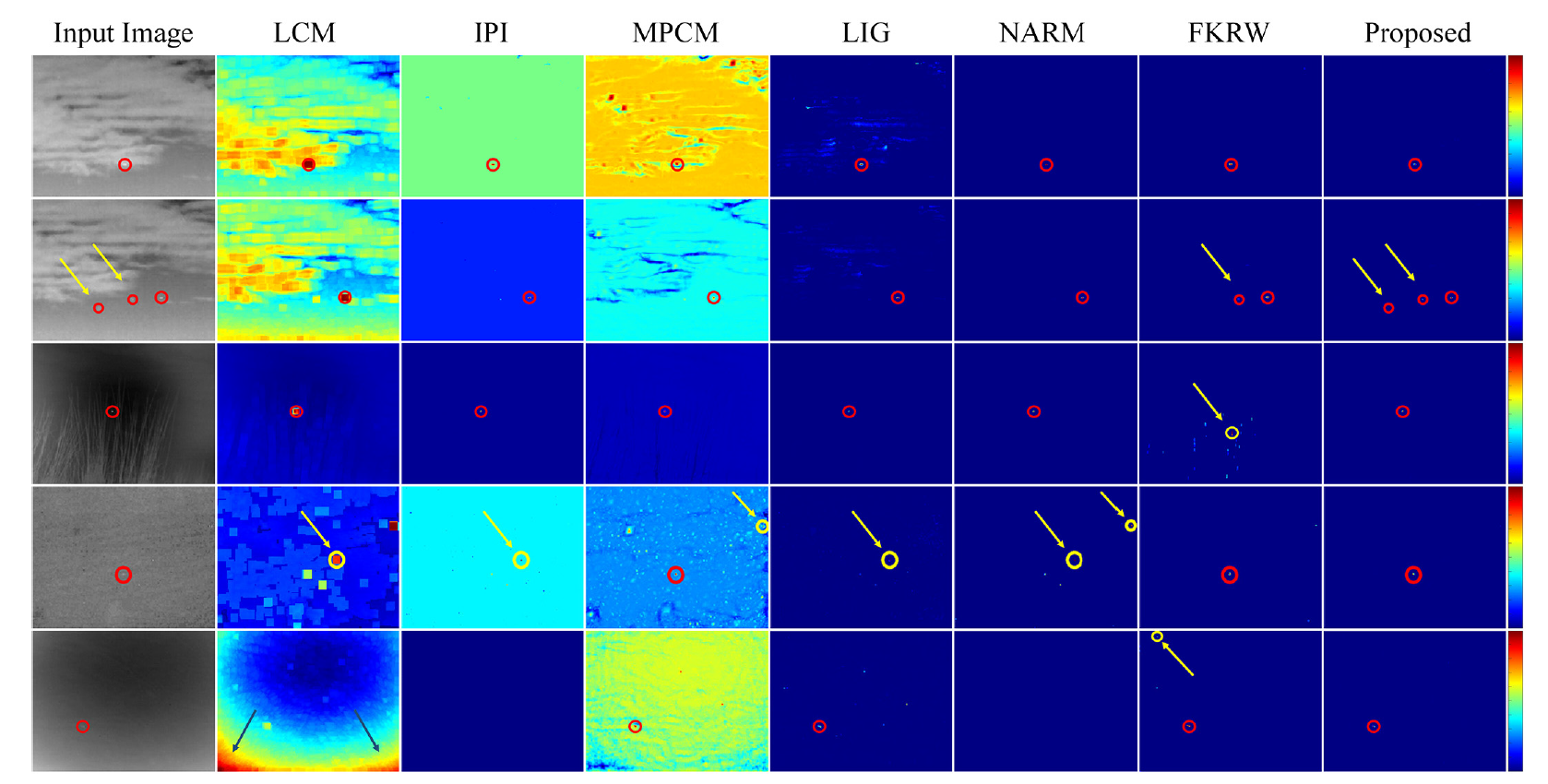As the develpoment of optic engineering, the infrared searching and tracking (IRST) system has been widely used in defense and civilian applications. The operation distance of the IRST system is highly related to the detection performance of small targets, which are typically in complex backgrounds and with low signal-to-clutter ratio (SCR) and small size.
The small infrared (IR) targets have several important characteristics. First, the small targets exhibit popout behavior, meaning that the target textures and SCR are quite distinct from their surrounding pixels. Second, the target pixels are different from the background pixels in terms of local contrast and gradient values. The combination of popout behavior and local SCR plays a key role in searching for target candidates efficiently, while the local contrast and gradient properties are effective for accurately distinguishing real targets from strong background clutters.
A research team leading by Professor. DONG Yongsheng from Xi'an Institute of Optics and Precision Mechanics (XIOPM) of the Chinese Academy of Sciences (CAS) proposed fast adaptive masking and scaling with iterative segmentation to perform the smarter and faster small infrared
Considering striking the balance between speed and performance, they first apply a difference of Gaussian (DoG) filter to the input image and calculate a binarized mask, and adaptively estimate a scale factor based on the mask. The masks and scale factors enable a fast and accurate overall target detection system. They then combine the local contrast and gradient properties for high-performance target detection and background suppression. Finally, the accurate extraction of the targets is performed by iterative segmentation. The overall architecture of the proposed method is shown in Fig. 1. The results were published in IEEE GEOSIENCE AND REMOTE SENSING LETTERS.
 Fig. 1. The overall architecture consists of masking, adaptive scale factor estimation, contrast and gradient map generation, and target detection using iterative segmentation. (Image by XIOPM)
Fig. 1. The overall architecture consists of masking, adaptive scale factor estimation, contrast and gradient map generation, and target detection using iterative segmentation. (Image by XIOPM)
 Fig. 2. Comparison of detection scores among state-of-the-art methods. The correct and false segmentation results are marked by red and yellow circles, respectively. (Image by XIOPM)
Fig. 2. Comparison of detection scores among state-of-the-art methods. The correct and false segmentation results are marked by red and yellow circles, respectively. (Image by XIOPM)
The detection scores/maps of the proposed the fast adaptive masking and scaling with iterative segmentation (FAMSIS) method and comparison methods are illustrated in Fig. 2. It should be noted that sequence one (S1) is a quite challenging data set because there are three targets in the last seven frames, two of which are quite dim and small. The proposed method has a clear advantage in detecting challenging targets such as missiles in the second row. More importantly, the proposed method performed most robustly for the dim and small targets with strong clutter noise, as shown in the fourth and fifth row.
Since the rapid development of remote sensing technology, the infrared thermal image has played an important role in defense and civilian applications. In the future war, the smarter and faster small infrared target detection can make the better contributions to our warfare capability.
Download: